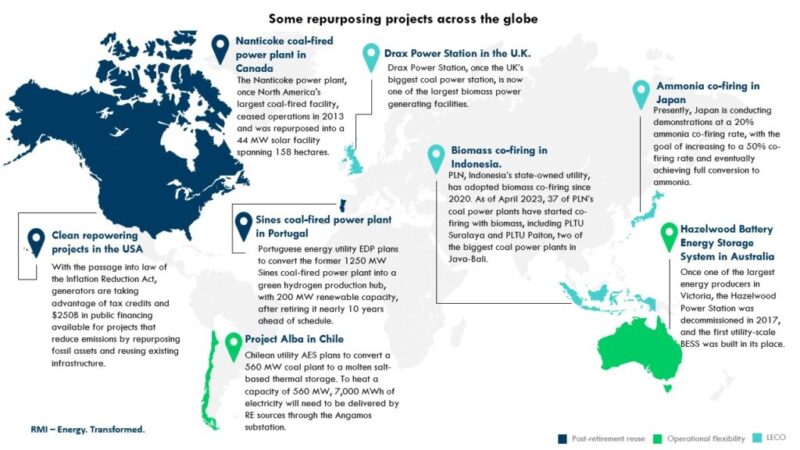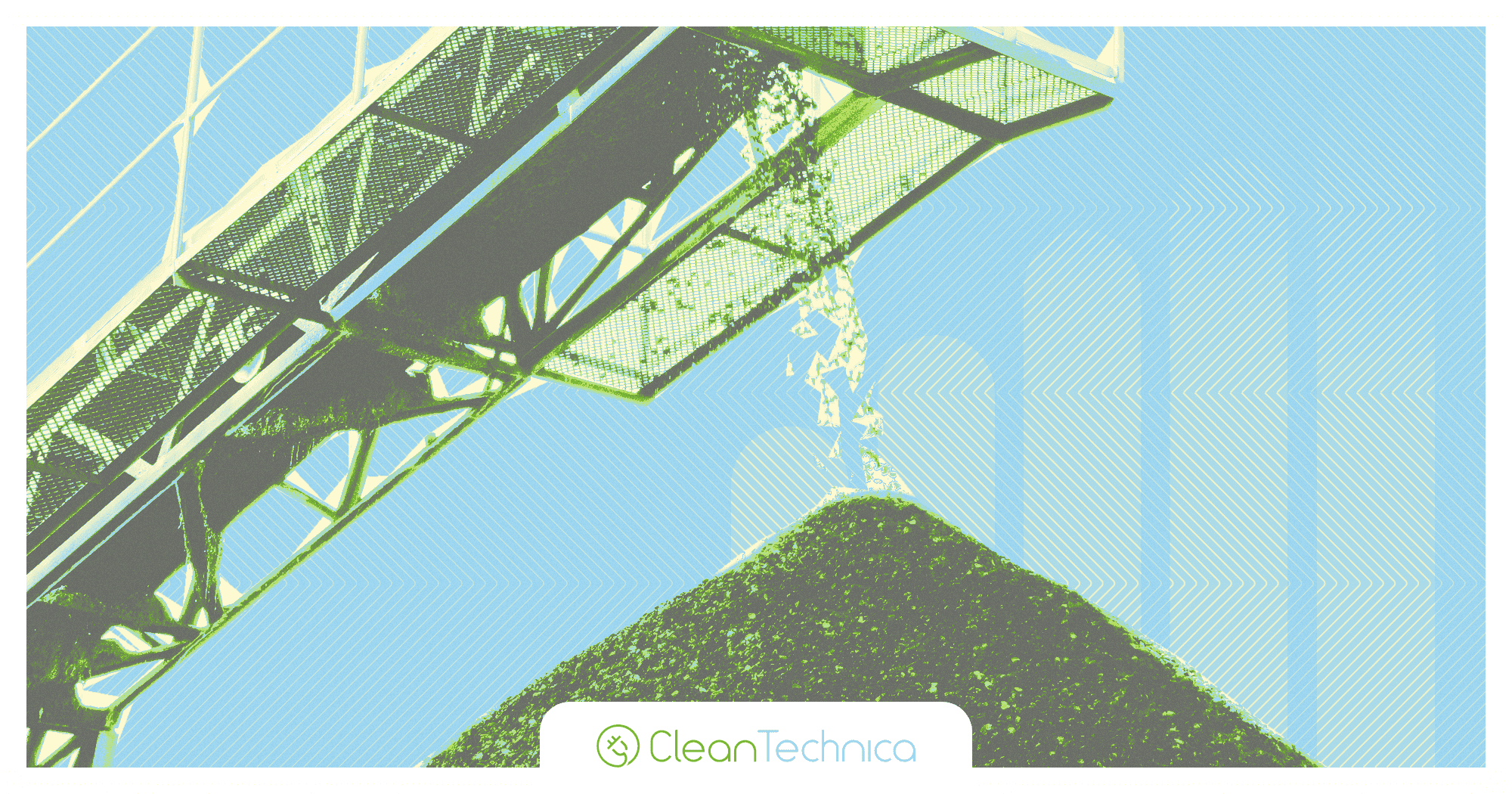Demystifying Coal Repurposing in the Global Energy Transition

Sign up for daily news updates from CleanTechnica on email. Or follow us on Google News!
The repurposing of coal plants is gaining buzz. In a new article series, Finding (Re)purpose, we break down what it is and why it matters.
Pressure to accelerate a managed phaseout of unabated coal has been building worldwide to achieve net-zero targets and curb climate change. Alongside retirement, “repurposing” coal plants is surfacing as a key strategy for regulators, utilities, and plant owners in emerging markets to meet these goals, especially where access to low-cost clean technology and financing is limited. Recent IEA reports highlight the potential of repurposing coal plants, for example for increased flexibility, to help meet energy transition targets. This approach is central to initiatives like Indonesia’s Just Energy Transition Partnership, where coal plant repurposing is a cornerstone of its managed phaseout strategy. Additionally, various organizations, including the Carbon Trust, CIF, and WEF have published tools and guides on coal plant repurposing.
Finding the best way to repurpose a coal plant is a complex and difficult process to navigate. First, there is a wide range of possible technology options. Second, many of the technology options involve trade-offs in long-term climate impact, investment needs, job creation, bankability, and system reliability. Context-based technical and financial details are essential in balancing these trade-offs and understanding how and when a coal repurposing project can move forward. Getting the specifics about a coal repurposing approach will ultimately boost its credibility as an emissions reduction tool; but it is easier said than done.
This is the first article in our series to demystify repurposing by clarifying what it is and how decision-makers should consider repurposing options, drawing on practical and real-world case studies. In this first article, we start with the basics of what repurposing is, when it could make sense, and its key trade-offs.
Removing the buzz: what, really, is coal plant repurposing?
So, why pursue coal plant repurposing? Repurposing coal plants can provide valuable grid services to support reliability and grid operations. When implemented strategically, it can help overcome the near-term challenges to scaling up clean energy, like financial and technical constraints, while reducing interim emissions and enabling continued economic opportunities for workers and communities.
Given that repurposing should be utilized as a transition strategy to support grid operations as grids decarbonize, RMI categorizes repurposing approaches based on their role and function in maintaining grid reliability: post-retirement reuse, operational flexibility, and lower emissions continuous output (LECO). Several projects worldwide have already been implemented under these approaches.
 Post-retirement reuse
Post-retirement reuse
Post-retirement reuse is possible if a coal plant’s generation can be removed or replaced without affecting reliability. The site and some equipment can be reused for a clean energy project that maintains partial energy generation capacity, or for other infrastructure that supports grid stability. Post-retirement reuse has mainly occurred in two ways: reuse of interconnection infrastructure for renewable facilities like clean repowering projects in the United States, and conversion to synchronous condensers like in Australia to help with frequency and voltage control.
Operational flexibility
In this category, repurposed coal plants provide flexible or load-following services to allow peak shifting and support the integration of growing shares of variable renewable energy sources. Without repurposing, coal power plants typically operate continuously at a steady output level, making it challenging to adjust their generation to accommodate fluctuations in renewable energy availability or grid demand. The adoption of this approach can usually be pursued when reducing or canceling coal plant output will not affect grid reliability during low and intermediate net load hours. There are two main technological solutions being implemented for operational flexibility: flexible coal generation and energy storage.
Flexible coal power generation is a technological solution where, through retrofits and equipment upgrades, coal plants can start up quickly, operate at lower minimum stable loads, and improve ramp rates. Given it involves continued reliance on coal, this technology is viewed only as a transitional vehicle to ensure grid reliability as clean energy scales. A cleaner and commercially available alternative to provide this flexibility and/or ancillary services is stand-alone energy storage. These storage systems can take the form of traditional batteries (e.g., lithium-ion or iron-air) or thermal storage, where electricity is used to heat thermal mass materials (such as molten salts), like Project Alba in Chile.
Lower emissions continuous output (LECO)
In pockets of the grid facing reliability concerns over extended time periods, “firm” generation resources may be needed. The objective of LECO is to repurpose a coal plant to continue providing continuous or stable generation, while still reducing emissions. In emerging economies with very young coal fleets, LECO might be a feasible alternative to the business-as-usual operation of the coal plant. This approach is usually the “last resort” since it takes the smallest step toward a successful transition compared with other approaches and is often costly based on the technology options for LECO today.
There are several proposed technological solutions to reduce the emissions impact of continuous coal plant operation, like retrofitting CFPPs to co-fire with, or convert fully to, alternative fuels such as biomass and ammonia. Small modular nuclear reactors offer a more compact alternative to traditional nuclear power plants; and carbon capture, utilization, and storage has been proposed as a future option for mitigating emissions from remaining unabated plants — though the expected share of this is low.
Navigating repurposing decisions and trade-offs
While these approaches are mainly focused on maintaining grid reliability or meeting required electricity services, there are other goals or outcomes to pursue when evaluating repurposing options. These include electricity costs, climate, jobs, and financial viability. Many of these goals may be at odds with each other. For example, a flexibility service may be required in the grid, but it might not be remunerated enough to make it financially attractive. Moreover, near-term benefits of repurposing can be outweighed by long-term consequences (like fossil fuel lock-in) if planning for repurposing does not support a widespread shift to clean energy. Asset-level outcomes may also have ripple effects at a system-level, where choosing a certain repurposing pathway may necessitate other off-site activities to supplement the repurposing decision in parallel.
The concept of coal repurposing holds promise as a potential strategy for transitioning away from fossil fuels; however, its effectiveness and feasibility depend heavily on the specific circumstances of each case. When used as a “catch-all” solution without setting clear goals, it may seem less credible as a way to reduce emissions. Additionally, navigating the intricacies of repurposing can prove challenging for plant owners and policymakers alike. To address this conundrum, RMI’s coal repurposing article series will delve into these complexities, providing concrete examples that illustrate critical tradeoffs that different decision makers might consider in their coal repurposing plan.
RMI is grateful to Bloomberg Philanthropies for their generous support of this work.
By Selena Kay Galeos, Diego Angel Hakim, Tyeler Matsuo © 2024 RMI. Published with permission. Courtesy of RMI.

Chip in a few dollars a month to help support independent cleantech coverage that helps to accelerate the cleantech revolution!
Have a tip for CleanTechnica? Want to advertise? Want to suggest a guest for our CleanTech Talk podcast? Contact us here.
Sign up for our daily newsletter for 15 new cleantech stories a day. Or sign up for our weekly one if daily is too frequent.
CleanTechnica uses affiliate links. See our policy here.
CleanTechnica's Comment Policy

